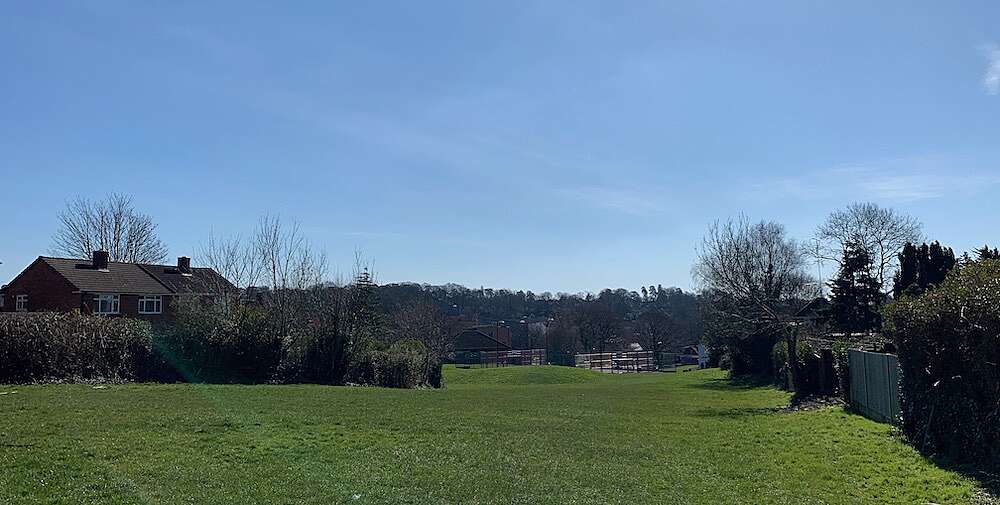
I don't remember where I read this, and I'm not entirely sure I haven't made it up. But it rings true.
The combination of blue and green that greets us on a sunny day on a walk in a grassy field makes our brains feel happy. That's probably not the full explanation of the neurology. But, still, in my experience it makes me feel better about the day when I'm out and it's like this photo. A long field of green grass, a blue sky with a handful of wispy clouds.
(Actually, I like it more with a smattering of cumulus because of their apparently infinite shapes and swirls. And they way they look improbably like floating cotton wool.)
There's something about the depth of detail in the scene that makes it satisfying. I could bend down, examine a single blade of grass among its peers. Then look closer again, note how this blade has a small notch at three-quarters of its height. I notice a tiny ant scurrying along, wiggling its tentacles [sic!].
Standing up, I look at the sky, realising that the fluffy edifices (how can they be made of water anyway?!) are drifting gently across my view, turning and swirling by degrees, morphing gently of their own accord.
We hear often that information overload is the main cause of stress in our modern world, because of the amazing connectivity the technology revolution has brought us. (Talk about first-world problems!)
But as David Allen, author of Getting Things Done, points out:
"[Y]ou just have to decide what’s potentially meaningful information. See, information overload is not the issue. If that was true, you’d walk into a library and die. As a matter of fact, the most information rich place in the universe is the most relaxing – nature.
So if you were to walk on the beach in Poland and look at the Baltic Sea, you’re gonna have a whole lot of information there. It’s just that you’re not looking at that and thinking, “Oh, I need to do something about any of that.”
The problem is that every email you get has this potential snake or bear or thunderstorm or, you know, whatever’s inside of it. You just don’t know what that is. But you think there might be. So you think, “Oh my God! There might be something meaningful inside of that!” So it’s not information overload, it’s potential meaning overload."
In other words, the problem isn't having too much sensory input, it's having too little space to process the inputs I'm getting from the world. A time when my brain isn't being triggered by opening another potential landmine disguised as an email . . . which is, in literal terms, a set of coloured lights shining into my eyes which form abstract shapes that my brain interprets as letter sounds and ascribes concrete meaning as though it posed a literal threat to my life.
Then I open the next and it's the same story, building my stress levels because I'm not taking the time to emotionally and physically process the threat. Much better to let my thoughts run their course. I highly recommend Brainchains by neuroscientist Theo Compernolle for further reading on how important this kind of daydreaming is for our brains, and how, to use his direct but unmistakeable phrasing, "we are f***ing up our intellectual productivity by always being connected and multitasking." If we seek constant stimulation for our brains by external devices which interrupt our trains of thought, we're committing to making ourselves more stupid.
Thus the beauty of a walk on a sunny day.
For some blue sky thinking.